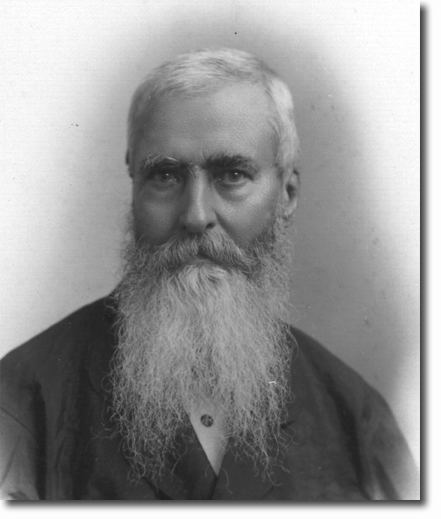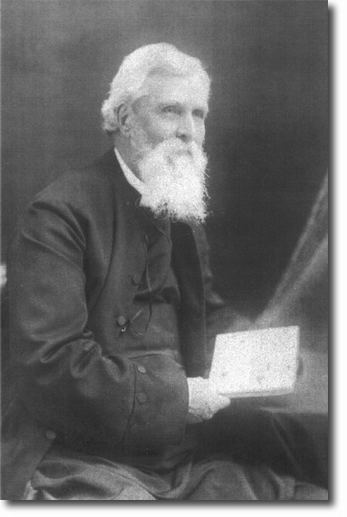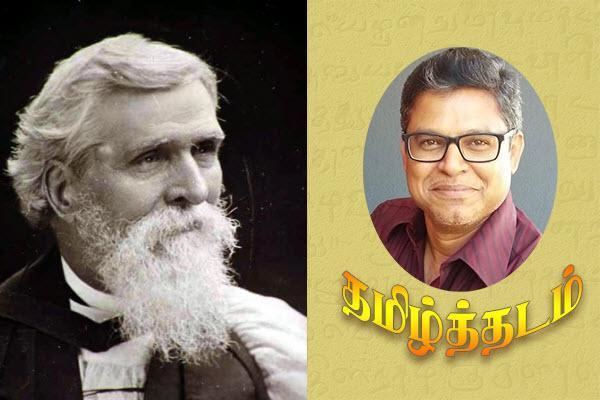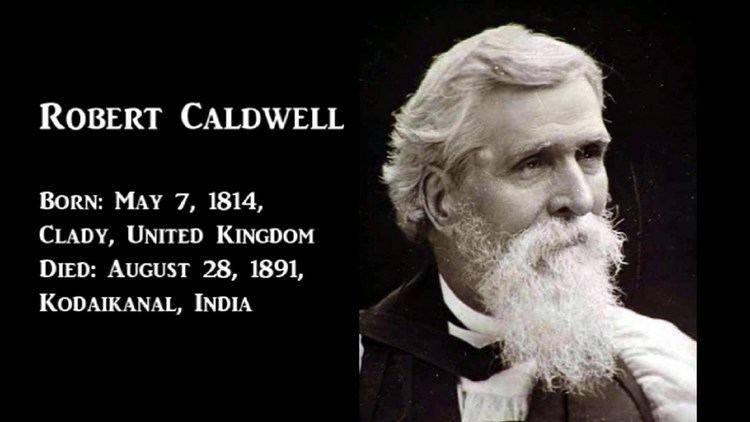Nationality British | Name Robert Caldwell | |
 | ||
Books A Comparative Grammar of the Dravidian or South-Indian family of languages | ||
Biography of robert caldwell
Bishop Robert Caldwell (7 May 1814 – 28 August 1891) was a missionary and linguist, who academically established the Dravidian family of languages. He served as Assistant Bishop of Tirunelveli from 1877. He was described in The Hindu as a "pioneering champion of the downtrodden" and an "avant-garde social reformer". The Government of Tamil Nadu has created a memorial in his honor and a postage stamp has been issued in his name. a statue of Caldwell was erected in 1967 near to Marina Beach, Chennai, as a gift of the Church of South India.
Contents
- Biography of robert caldwell
- Missionary robert caldwell idayangudi biography classic tamil
- Early life
- Caldwells Comparative Grammar
- Archaeological research
- Lifes work
- Works
- References

Missionary robert caldwell idayangudi biography classic tamil
Early life

Robert Caldwell was born at Clady, then in County Antrim, Ireland, on 7 May 1814 to poor Scottish Presbyterian parents. The family moved to Glasgow and there he began work at the age of nine. Mostly self-taught, he returned to Ireland aged 15, living with an older brother in Dublin while studying art between 1829 and 1833. He then returned to Glasgow, probably as a consequence of a crisis of faith, and he became active in the Congregational church.

Caldwell won a scholarship to Balliol College, Oxford only to find it rescinded when the authorities discovered that he had been born in Ireland. He responded by joining the London Missionary Society, who sent him to the University of Glasgow for training. There Caldwell came under the influence of Daniel Keyte Sandford, a professor of Greek and promoter of Anglicanism whose innovative research encouraged Caldwell's liking for comparative philology and also theology. Caldwell left university with a distinction and was ordained as a Congregationalist minister.

At 24, Caldwell arrived in Madras on 8 January 1838 as a missionary of the London Missionary Society and later joined the Society for the Propagation of the Gospel Mission (SPG). To further his missionary objectives, Caldwell realised that he had to be proficient in Tamil to proselytise the masses and he began a systematic study of the language. He was consecrated Bishop of Tirunelveli in 1877. In 1844, Caldwell married Eliza Mault (1822–99), with whom he had seven children. She was the younger daughter of the veteran Travancore missionary, Reverend Charles Mault (1791–1858) of the London Missionary Society. For more than forty years, Eliza worked in (Idayankudi) and Tirunelveli proselytising the people, especially Tamil-speaking women.
Caldwell's Comparative Grammar

Robert Caldwell used the term Dravidian to separate the languages spoken in South India from other, more Sanskrit-affiliated languages of India. Apart from the main South Indian languages of Tamil, Telugu, Kannada, Malayalam, Tulu, the Brahui language spoken in Pakistan and Afghanistan also belongs to the Tamil language family. A few more languages have been identified as such. Scholars in the 19th century prior to Caldwell considered Tamil and other South Indian languages to be rooted in Sanskrit and affiliated to the Indo-European language family. Linguistics has accepted and confirmed Caldwell's work, even though some early critics such as Charles E. Gover, author of The Folk Songs of South India disagreed with his findings.
While Caldwell's A Comparative Grammar of the Dravidian or South-Indian family of languages was prescient in recognising that Dravidian languages constitute a distinct language family, "Caldwell's primary concern was to convert the south Indians to Christianity" and at times the work deliberately ventures beyond the scope of linguistics to advance that goal.
The Caste system in India was an exploitative, violent and dehumanising ideology that served the interests of high-caste Hindus. In keeping with his Christian beliefs, Caldwell was absolutely opposed to it and committed to the welfare of people whom he believed could be liberated from casteist oppression through evangelism. His efforts to evangelise were directed specifically towards members of the Tamil-speaking Chanar caste, who self-identified as Hindu. Caldwell took the conclusions he had arrived at with respect to the Dravidian language family's distinctive features in a radically new direction by claiming that Tamils, particularly those from the lower-castes like the Chanars, constituted a community distinct from "other Hindus".
Caldwell asserted that the Chanar were not merely Tamil speakers but an "indigenous Dravidian" people, distinct ethnically and, most critically for him, religiously, from their high-caste oppressors, whom he referred to as "Brahmanical Aryans" (another invention of Caldwell's - in this case "Aryan" as an ethnic signifier for foreign and "Brahmanical" to signify the "Hinduism" of the high-caste). These wildly speculative claims, well outside the scope of linguistics, were intended "to develop a history which asserted that the indigenous Dravidians had been subdued and colonised by the Brahmanical Aryans". However, the first edition of Caldwell's grammar was "met with firm resistance" by the Chanars precisely because they "did not like the idea of being divorced from Brahmanical civilisation", the very division Caldwell was hoping to exploit. As a result, Caldwell portrayed Chanar culture as "superior" but nonetheless "distinct" to Hindu culture in subsequent editions to further his objective of alienating them from high-caste Hindus and converting them to Christianity.
The book has been described as being on occasion "pejorative, outrageous, and somewhat paternalistic. But on the whole his studies represent a pioneering effort to understand religions completely foreign to the British mind". In the domain of Dravidian linguistics though, it remains a respected work today.
Archaeological research
While serving as Bishop of Tirunelveli (alongside Edward Sargent), Caldwell (who was not a trained archaeologist) did much original research on the history of Tirunelveli. He studied palm leaf manuscripts and Sangam literature in his search, and made several excavations, finding the foundations of ancient buildings, sepulchral urns and coins with the fish emblem of the Pandyan Kingdom. This work resulted in his book A Political and General History of the District of Tinnevely (1881), published by the Government of the Madras Presidency.
Life's work
Caldwell’s mission lasted more than fifty years. The publication of his research into both the languages and the history of the region, coupled with his position in both Indian and English society, gave stimulus to the radicalisation of the Non-Brahmin movement.
Meanwhile, on difficult ground for evangelism, Caldwell achieved Christian conversion among the lower castes. He had adopted some of the methods of the Lutheran missionaries of earlier times, having learned German purely in order to study their practices.
Caldwell the Tamil language scholar, Christian evangelist and champion of the native church, remains today an important figure in the modern history of South India. He is still remembered there, and his statue, erected eighty years after his death, stands near the Marina Beach at Chennai. The Indian historian Dr M.S.S. Pandian, Visiting Fellow at the Centre for the Study of Developing Societies in Delhi, recently commented that Caldwell’s "contribution to both Christianity in South India and the cultural awakening of the region is unmatched during the last two hundred years".
A commemorative postage stamp on him was issued on 7 May 2010.
